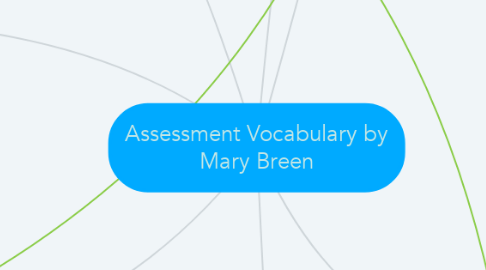
1. Assessments: A series or variety of procedures used to gain information about student learning and the learning process (Both qualitative and/or quantitative).
2. Types of Assessments
2.1. Test: A specific assessment or instrument typically with a set of questions to be given during a particular period of time, and under the same conditions for all students.
2.2. Measurement: When we assign number scores as the result of a test, following specific guidelines (quantitative).
2.3. Maximum performance: Used to determine the developed abilities or achievements of an individual. How well will the individual perform when they are motivated to earn the highest score possible?
2.4. Typical performance: Procedures that reflect an individual’s behavior, and determines what they will do, not what they can do.
2.5. Fixed-choice tests: Includes multiple choice, true-false, matching questions. These tests are highly efficient because students can respond to a large amount of questions in a shorter amount of time.
2.6. Complex-performance tests: These tests typically assess student performance while students take part in problem-solving tasks. Examples include open-ended math problems, written essays, lab experiments, presentations, projects, and art work.
3. Assessment Purpose
3.1. Placement assessment: Used to determine a student’s performance prior to instruction.
3.2. Formative: Used to observe how learning is progressing throughout instruction.
3.3. Diagnostic: Used to diagnose difficulties a student may be having with learning during instruction.
3.4. Summative: Used to determine what was learned and achieved after instruction.
4. Interpretations of Assessments
4.1. Norm-referenced interpretations: Describes the performance in terms of the relative position held in some known group.
4.2. Criterion-referenced test: Describes the. specific performance that was demonstrated.
5. Types of Grading Systems:
5.1. Letter-Grade System: Assigns a single letter grade or number grade as a score. It is an easy-to-use and concise grading system.
5.2. Pass-Fail System: Serves as an option to the traditional letter grade system, and allows students to take courses that are not included in their grade-point average.
5.3. Checklist of Objectives: Schools provide a list of objectives to be checked or rated, which includes ratings of progress on subject areas such as reading and math.
5.4. Letters to Parents: Reporting student progress to parents, including student strengths, weaknesses, and learning needs.
5.5. Portfolio of Student Work: Portfolios can demonstrate student progress, strengths, and where greater effort is needed.
5.6. Parent-Teacher Conferences: Helps to better establish cooperation between teachers and parents, and provides two-way communication between home and school.
6. Assessment Categories
6.1. Informal tests: Test given by classroom teachers.
6.2. Standardized tests: Designed by test specialists, and administered, scored, and interpreted under standard conditions.
6.3. Individual tests: Tests that are given on a one-to-one basis using oral questioning.
6.4. Group tests: Tests administered to a group of individuals.
6.5. Mastery tests: An achievement that measures the mastery of specific learning outcomes.
6.6. Survey tests: Emphasizes a norm-referenced interpretation.
6.7. Supply tests: Tests that require answers to be supplied, such as an essay test.
6.8. Speed test: A test that determines the number of items a student can complete in a certain amount of time.
6.9. Power test: A test that measures the level of performance under ample time conditions.
6.10. Objective test: Tests that the scoring procedure is defined, such as a multiple-choice tests.
6.11. Subjective: Tests where the score is determined by the interpretation of the person who is scoring it.
7. Validity/Reliability
7.1. Validity: The evaluation of the adequacy and appropriateness of the interpretations and uses of assessment results. Validity takes into consideration the soundness and fairness of how the results are interpreted.
7.1.1. Considerations: Content, construct, assessment-criterion relationship, consequences.
7.2. Reliability: The consistency of assessment results. Reliability is a necessary but not sufficient condition for validity.
7.2.1. Test-retest method: Give the same test twice to the same group with some time interval between the tests, and correlate the two scores.
7.2.2. Equivalent forms method: Give two forms of the test to the same group in close sequence, then correlate the two sets of scores.
7.2.3. Split-half method: Give two forms of the test to the same group in close succession, then correlate the two sets of scores.
7.2.4. Test-retest with equivalent forms: Gives two forms of the test to the same group with an increased time interval between forms, then correlate the two sets of scores.
7.2.5. Kuder-Richardson and coefficient alpa: Give test once; apply Kuder-Richardson or Cronbach’s alpha formula.
7.2.6. Interrater method: Give a set of student responses requiring judgmental scoring to two or more raters and have them independently score the responses, then correlate the two sets of scores.

